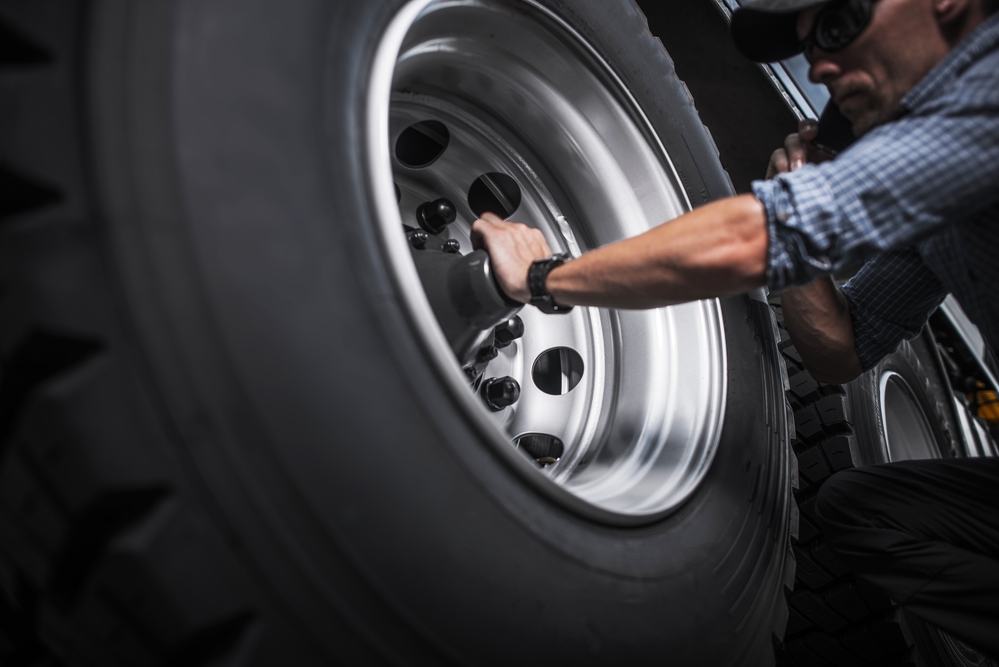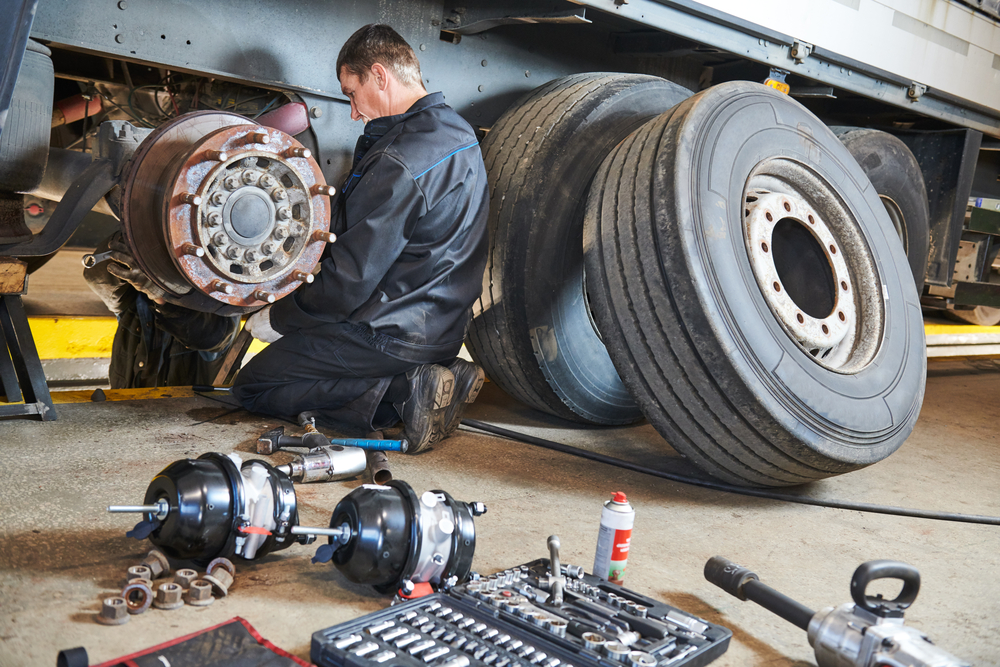
7 Truck Maintenance Tips To Keep Your Truck Running Like New
Truck servicing is important to keeping your vehicle running properly and extending its life. By regularly inspecting and maintaining your truck, you can avoid costly repairs, truck parts, and downtime.
Here are some tips for truck maintenance:
Change The Oil And Filter Regularly
Trucks are among the hardest working vehicles on the road, and they need regular maintenance to stay in top condition. One of the most important things you can do for your truck is to change the oil and filter regularly.
Oil is the lifeblood of your truck’s engine, and it needs to be changed regularly to keep things running smoothly. Depending on how often you use your truck, and what kind of conditions you’re driving in, you should change your oil every 3,000 to 5,000 kilometres.
When you change your truck’s oil, it’s also a good idea to replace the filter. Oil filters catch all sorts of impurities that can damage your engine, and they need to be replaced periodically to keep your engine running clean.
If you’re not sure how often to change your truck’s oil and filter, consult your owner’s manual or talk to a professional mechanic. They can help you develop a maintenance schedule that’s tailored to your truck’s specific needs.
Rotate The Tires
Most people don’t think about rotating their tires until they get a flat, but by then it’s too late. Routinely rotating your truck’s tires is one of the smartest and easiest ways to prolong their life, and save money in the long run.

Tires naturally wear down in certain spots as you drive. The front tires take the brunt of the force when you brake and turn, so they tend to wear out faster than the back tires. Rotating your tires equalizes the wear and tear, so they all last longer.
It’s easy to do it yourself and only takes a few minutes. First, find the owner’s manual for your truck and locate the tire rotation diagram. This will show you where to place each tire for optimum wear.
Next, jack up the front end of your truck and remove the front wheels. Set them aside, then do the same with the back wheels. Place the rear wheels on the front, and vice versa, following the diagram in your owner’s manual.
Finally, lower your truck back down to the ground and you’re finished! It’s that easy. Now your tires will wear evenly, giving you the best possible traction and a longer lifespan.
Flush The Cooling System And Change The Antifreeze
If you want to extend the life of your truck’s engine, it is important to regularly flush the cooling system and change the antifreeze. Coolant breakdown is one of the main causes of engine failure, so it is important to be proactive about maintaining your truck’s cooling system.
The cooling system in a truck is under a lot of stress. It has to work harder to cool the larger engine and there is often a lot of stop-and-go driving, which can cause the coolant to break down. When the coolant breaks down, it can’t protect the engine from corrosion and overheating.
To prevent this, it is important to flush the cooling system and change the antifreeze on a regular basis. You should flush the system every two years or 24,000 miles, whichever comes first. When you flush the system, you should also change the antifreeze.
The best way to flush the system is to take the truck to a professional. They will have the proper equipment to flush the system and they can also check for any leaks. If there are any leaks, they will be able to repair them before they cause further damage.
Changing the antifreeze is a simple do-it-yourself job, but it is important to use the proper antifreeze for your truck. The type of antifreeze you need will depend on the climate you live in. If you live in a cold climate, you will need to use an antifreeze that has a higher percentage of ethylene glycol.
In a truck, the cooling system is under a lot of stress. Coolant breakdown is one of the main causes of engine failure, so it is important to be proactive about maintaining your truck’s cooling system by flushing the cooling system and changing the antifreeze on a regular basis.
Change The Air Filter Regularly
If you have a truck, you know that it can be a workhorse. You rely on your truck to get you from place to place, whether you are going to work or going on a road trip. Just like any other vehicle, your truck needs regular maintenance to keep it running smoothly. One of the most important things you can do for your truck is to change the air filter regularly.
Your truck’s air filter is responsible for keeping dirt, dust, and other particles from getting into the engine. Over time, the air filter can become clogged, which can lead to reduced performance and fuel economy. It can also put unnecessary strain on the engine, which can lead to costly repairs down the road. For these reasons, it is important to change the air filter regularly.
How often you need to change the air filter will depend on how often you use your truck and the conditions you drive in. If you use your truck for off-roading or other dusty activities, you will need to change the filter more often. You should also check the air filter more frequently if you live in an area with a lot of pollution or dust.
Changing the air filter is a relatively easy task that you can do yourself. Simply locate the air filter housing, which is usually located near the front of the engine compartment. Remove the old filter and replace it with a new one. Make sure to check your truck’s owner’s manual for the specific type of filter you need.
If you take good care of your truck, it will take care of you. Changing the air filter regularly is one of the simplest and most effective ways to keep your truck running strong for years to come.
Inspect The Brakes And Replace Brake Pads As Needed
As summer comes to a close, now is the time to start thinking about getting your truck ready for the winter months. One of the most important things you can do to prepare your truck for winter is to inspect the brakes and replace brake pads as needed.

Brakes are one of the most important safety features on your vehicle, so it is important to make sure they are in good working order. This is especially true in the winter when icy roads can make stopping your truck more difficult.
To inspect your brakes, start by removing the wheels. Then, check the brake pads for wear. If the pads are worn down to less than 1/4 inch, they need to be replaced. You should also check the brake discs for wear or damage. If you see any cracks or chips in the disc, it needs to be replaced.
Once you have inspected the brakes, put the wheels back on and take your truck for a test drive. Pay attention to how the brakes feel and make sure they are working properly. If you have any concerns, take your truck to a qualified mechanic to have it checked out.
Check The Engine For Leaks
If you have a truck, especially an older one, you should check the engine for leaks regularly. Leaks can occur in many places, such as gaskets, seals, and hoses. If left unchecked, they can cause serious damage to your engine.
The best way to check for leaks is to do a visual inspection. You should look for any stains or wet spots on the engine. If you see any, it’s time to check that area more closely.
If you’re not sure where the leak is coming from, you can try this simple test. Put a piece of cardboard under your truck’s engine overnight. In the morning, check the cardboard for any wet spots. This will help you identify the location of the leak.
Once you’ve found the leak, it’s important to fix it as soon as possible. Depending on the severity, you may be able to do it yourself with a repair kit. Otherwise, it’s best to take it to a mechanic. Ignoring a leak can cause major damage to your engine, so don’t wait to get it fixed.
Inspect The Steering And Suspension
Your truck’s steering and suspension system are vital to the safety and performance of your vehicle. Regular inspection and maintenance of these systems are essential to keep your truck running smoothly.
The steering system of your truck includes the steering wheel, steering column, and steering linkage. The suspension system consists of the shocks, springs, and other components that support the truck’s body and absorb impact.
Inspecting the steering and suspension system of your truck includes checking the alignment of the front end, inspecting the shocks and springs, and examining the tires and wheels.
The alignment of the front end of your truck should be checked regularly. This can be done by a professional, or you can check it yourself with a simple tool. To check the alignment, park your truck on a level surface and measure the distance from the ground to the center of the front wheel.
The shocks and springs of your truck’s suspension system play a vital role in the comfort and performance of your vehicle. These components should be inspected regularly for wear and tear.
The tires and wheels of your truck play a critical role in the performance of your vehicle. Inspect the tires for tread wear and the wheels for any damage.
If you notice any issue with the steering or suspension system of your truck, it is important to have it repaired immediately. These systems are vital to the safety and performance of your vehicle.
By following these tips, you can keep your truck in tip-top shape and extend its life.



